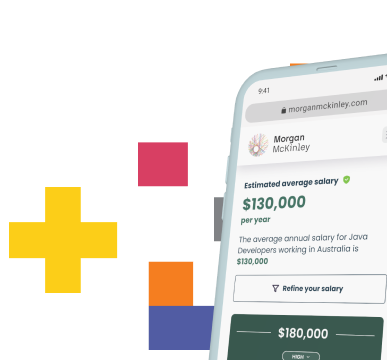Women in Tech - Claire Bradford, Dolby Laboratories

Having emigrated from the UK, Claire Bradford is now a Senior Manager of Engineering at Dolby Laboratories, leading teams of QA Engineers, Software Engineers and Engineering Managers.
For a time, she has led the Women in Engineering initiative at Dolby, working closely with the University of Sydney and UNSW to support women starting their careers, as well as multiple environmental initiatives both within and outside of Dolby.
Prior to Dolby, Claire has a diverse history, with a wealth of experience across Finance/Insurance, Telecommunications and Media/Entertainment industries and even having a successful career within the Music Industry as a Record Label owner and DJ. Claire’s career in Technology has allowed her to explore different industries and parts of the world. She agreed to sit down with us (virtually, of course) to go over her experience and to give her thoughts on some of the issues that we face today.
The Inevitability of Risk
A major point of interest that strikes true with both Claire and many of the other leaders in this series, is the inevitability of risk. Whether that’s speaking your mind, applying for a new job or position, moving cities/countries/continents, there are risks all around everyone.
For Claire there have been many ‘risks’ in her life, one of the most profound being her career switch.
With her QA career in the Finance/Insurance industry not giving the satisfaction and meaning that she was looking for, she gave up a lucrative career to take up studying Music Production/Sound Engineering.
With undertaking a massive change like this, there are always dangers, questions about whether she will succeed or even like the switch, it’s enough to make you not take the risk in the first place.
However, risks and taking risks are a fundamental part of growth as they force you to evaluate your situation and seek out opportunities for change and satisfaction. Evaluating risk is one thing but actually taking those risks is another. Below are some of Claire’s key tips that support her when she deals with risk:
- Have a back-up plan! Having a technical/engineering skill set that was (and still is) in demand means that no matter what happens, you’ll always have something to fall back on. Even if things go wrong, you’ll have a stable base and any failures just become learning experiences to grow upon and this will give you the confidence to try new things.
- Do your research and be well organised. This helps you get a good understanding of the possible consequences and ensures that you can have contingencies in play if (when) things go wrong, so you can address your worries both before and when they are happening!
- Explore saying ‘Yes’ more than ‘No’ when responding to help and advice during times of risk taking. Be sure you are happy with your choices but allow others to provide help and guidance even if you don’t end up following it.
Overall, risk is a good thing, without risk it’s likely that you won’t grow, and we have to change our cognition, from being risk-averse to pro-risk. The age old saying really is right; no risk, no reward!
Through her risks, Claire has been fortunate enough to be in teams where they expected much of her and this led onto being given opportunities by senior peers that believed in her abilities.
However, throughout her career she faced a tremendous amount of self-doubt. It has been one of the biggest challenges that she has faced and as she has progressed in her career, she has often thought “Am I capable of doing this?”. This will sound familiar for many female software engineers (in all levels of seniority), and as a recruitment agency we’ve seen it stop many people (both male and female) from applying for new jobs or promotions. At the same time, this disconnect is often a source for anxiety.
Perseverance & Resilience
It’s still a challenge that Claire faces, however she’s been able to learn and strategise about ways to deal with self-doubt. Often one of the key characteristics in persevering is ensuring that you “fake it till you make it”.
If others believe that you can do something, it’s likely that you can do it and any doubts are all in your head.
Claire is no stranger to rejection either (in a good way!). While she did build up a successful music career and manage a record label, it started with rejection. Initially turned down by numerous recording labels, she decided to start her own as a platform for her own releases, which led onto giving opportunities to other young new artists coming through the ranks.
When doing new things, you are bound to fail in some way, whether it’s building a web application, learning a new language or picking up a new instrument. It’s important to understand that you can try again and every failure just gives you another opportunity to try something new and eventually succeed. It can also open the door to other opportunities as Claire found when she started her own label.
In saying that, success is rarely ever a solo effort, from the peers that have given her endless support, to managers that believed in her and gave her additional responsibilities and the organizations that invested in her. For Claire though, something that she credits most is the professional coaching she has received since moving into Leadership positions.
Having someone that’s fairly removed from your life who you can confide in but also is able to give you an outside perspective has really allowed Claire to get a solid understanding of herself, her strengths and weaknesses. People seem to have their own connotation of professional coaching (or professional therapy as she calls it), however she’s found it incredibly useful and believes it should be made more accessible to people around her.
Diversity Over Time
As Claire’s career has progressed, she agrees that the workforce has become more diverse.
It’s important to note though, that the diversity issues we face are not just pertaining to the gender gap but also includes disparities in race, sexuality, age and disability amongst others. And while there definitely have been improvements, there's still a long way to go.
For her, to increase diversity, it’s all about increasing opportunities through engagement/outreach initiatives, increasing access to education and most importantly having role models that future technology leaders can aspire to be.
Even though she has had (and is still having) a successful career, seeing all the successful women who have achieved greatness and are still pushing the boundaries of what women can do inspires her to keep trying and keep pushing herself.
In such a light, she imagines that the more diverse set of leaders we have, the greater levels of diverse participation and equal opportunity we can provide to the next generation!














